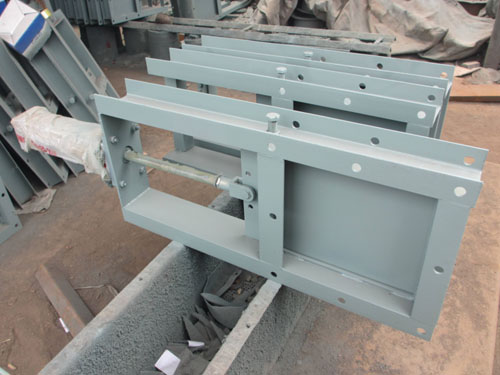SURVIVAL THROUGH QUALITY
PRODUCT CENTER
-
Pulse dust collector
-
Mine dust collector
-
Boiler dust collector
-
Metallurgical dust collector
-
Carbon plant dust collector
-
Chemical dust collector
-
Rubber dust collector
-
Woodworking dust collector
-
Single machine dust collector
-
Static electricity Dust collector
-
Cyclone dust collector
-
Wet dust collector
-
Filter cartridge dust collector
-
Insert valve (gate valve)
-
Ventilation butterfly valve (cold air valve)
-
Spiral conveyor (auger)
-
Scraper conveyor
-
Dust humidifier
-
Bucket elevator
-
Ash discharge valve
-
Material Handling Equipment
-
Wet scrubber
-
Dust collector
-
Dust removal filter bag
-
Dust removal bag cage
-
Polishing platform
-
Waste gas treatment equipment
-
Electric control cabinet
-
Fan
-
Smoke welding machine
-
Liquid level switch
-
Dust removal filter element
-
Aeration cushion
-
Sweeper
-
Dust suppression device
-
Solenoid valve

Pneumatic plug valve
The pneumatic plug valve is mainly composed of components such as frame, gate, screw, nut, etc. By turning the handwheel by hand, the screw, nut, and gate move back and forth horizontally to achieve the purpose of opening and closing the gate.
Pneumatic plug valve is a main control equipment for the flow or conveying volume of powder, crystalline, granular, and small materials. It is widely used in industries such as metallurgy, mining, building materials, grain, chemical, etc. to control flow changes or cut off. The pneumatic plug valve has a simple structure, flexible operation, light weight, no jamming, and is particularly suitable for the transportation and flow regulation of various solid materials, as well as block and cluster materials with a diameter of about 50mm. Its installation is not limited by angle, and it is easy to operate. The scale can be adjusted at any time. Structural characteristics: simple structure, flexible operation, light weight, no jamming, fast cutting, especially suitable for various viscosity free solids, powders, and particles smaller than 10mm. The conveying and flow regulation of crystalline particles are not limited by angle, easy to operate, and the opening can be adjusted at any time. Mainly used for the top, bottom, and import and export of warehouses in industries such as building materials, metallurgy, mining, power, chemical, glass, light industry, and grain. It is an ideal device for controlling large flow changes, frequent starts, and interruptions.
Pneumatic single and bidirectional gate valve, also known as manual knife gate valve, is a type of valve where the gate and valve seat are always in close contact and sealed. Its principle is that there is a circular opening on the gate with a diameter size, which is opened and closed by the gate to make the circular opening on the gate separate and match the diameter. The advantage of this valve is that the valve body diameter has no grooves, the medium will not be blocked, and it has full bore flow characteristics. Its sealing structure can be divided into soft sealing and hard sealing structures. The penetrating knife gate valve is characterized by its structure, good processability, and compact structure. The sealing valve seat is designed with a movable structure, which has anti wear and automatic compensation functions, resulting in a long service life. During the closing and opening process, the valve seat and gate plate are constantly in close contact, ensuring stable opening and closing force of the valve and possessing characteristics such as cutting off the medium.
Technical standards for pneumatic plug valves:
1. The shell test and sealing test media for the plug-in valve are water (containing agents), kerosene, or other suitable liquids with a viscosity not greater than water.
2. The sealing pair is a non-metallic sealed plug-in valve, and the sealing shell test and requirements are in accordance with GB/T13927-92 Class D.
3. The sealing pair is a metal sealed plug-in valve. For those with sealing performance requirements, the leakage rate of the sealing test is calculated at 1 x DNmm/s. For those without sealing performance requirements, this test is not conducted.
4. The plug-in valve driven by electric, hydraulic, and pneumatic devices, after adjusting the closing position, is closed three times and subjected to shell and sealing tests according to the requirements of 1 and 3.
5. The cleanliness requirements of the plug-in valve shall comply with the provisions of JB/T7748.
6. Static pressure life test.
7. The number of static pressure life tests for the plug-in valve shall be in accordance with the regulations, while other technologies shall comply with the provisions of JB/Z 234.

